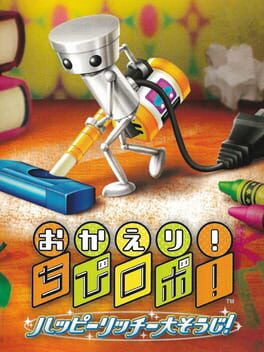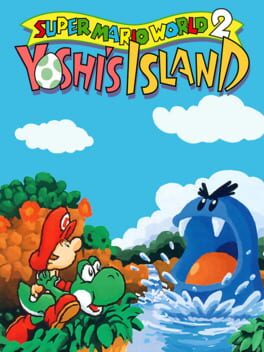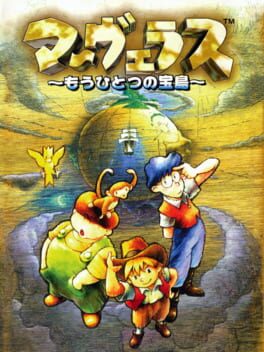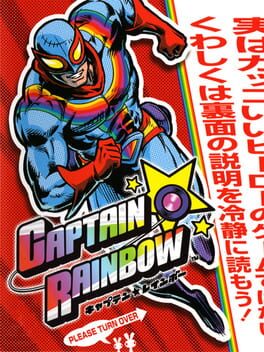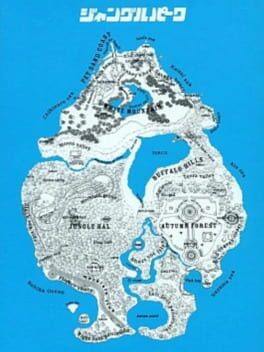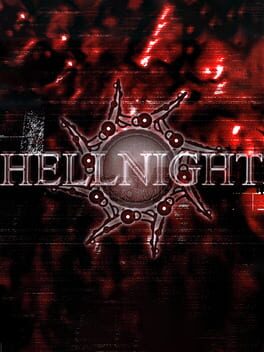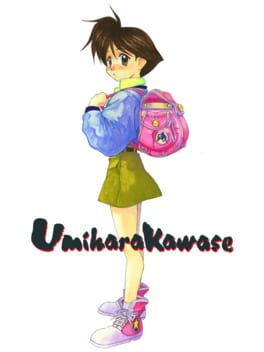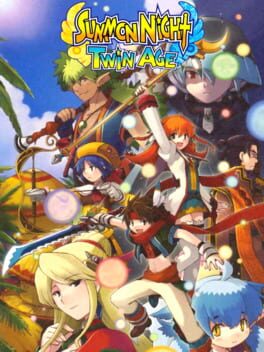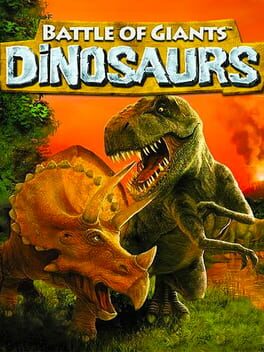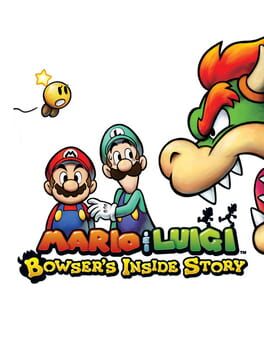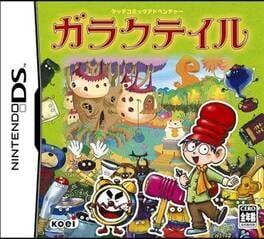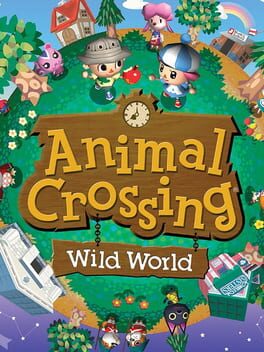DizzySkullKid19
This is a game I was actually able to complete, despite not knowing Japanese. However, I couldn't have done it without the help of a full playthrough on Youtube by someone named "ゲーム道場恐山", as well as this site: http://gamepukka.com/g001_dig-pukka.html.
Overall, it's a strange kind of game, in that I wouldn't necessarily recommend people go out of their way to play it, even though I personally enjoyed it.
You play as a shrew-like creature, named Pucca, who is sent by some agency to mine minerals across these different planets (despite translating from my translator to stars, you can walk on them). Each of these planets has a different theme, and each one has its own gimmicks. The goal of each planet is to get the "cosmic stone", the gem hidden in the innermost cavern of the planet.
Like the 2 "Pet in TV" games, which this game serves as kind of a sequel too (source: http://www.psxdatacenter.com/games/J/D/SCPS-10133.html under "manufacturer's description") an important gameplay gimmick of this game is that Pucca doesn't know what kind of objects he comes across. In other words, he can be a total idiot. Many times throughout the course of the game, Pucca thought a rock was food, and a piece of literal poop treasure. What you have to do in this game is this: everytime you DIRECT him to an object (if he goes up to it on his own, he will just assume its whatever he thinks it is), he will ask a question asking if it is what he thinks it is, to which you must answer accordingly. If you say no, you have to clarify what it is, if its treasure, trash, a cave, food, something pushable, etc. Basically, if it has a little glowing halo around it, it's worth something, if that doesn't show up, it's trash. It took me a while to learn this part of the game.
Although I haven't played many pet simulators, I assume this game deserves that label. In this game, Pucca will wander around, generally doing whatever the heck he wants, unless you direct him. This can make the game a frustrating but funny experience, for example whenever he sees a kiwi bird and thinks its a cave. The fun of the gameplay comes from directing Pucca towards the right outcome. To demonstrate his learning, he can take tests, but not tests where you choose the answer. Rather, Pucca answers for you based on what he learned on the field. I still have no idea, after finishing the game, what the tests even unlock, by the way.
Another fun part of the game is customization. The main ship in the game, I think it's called "the bug", you can customize, with different "themes", there's even a horror theme. Also, if you ever get sick of the basic music playing, which trust me, you will, you can change the BGM. The tracks can get pretty... experimental. They are pretty fun to listen to.
Gripes:
My main gripe with this game is how oblique it can be for non-Japanese speakers, or even Japanese speakers. You have to activate these events, which aren't always obvious, in order to reach the next areas. Also, if you are going to play this game, DO NOT, I repeat, DO NOT buy the backpack with a rainbow on the back, it has a hole in it so all the treasure you collected will fall out. You may end up going into debt and getting the bad ending, and it's terrifying.
Another problem with this game is the daily time limit. Pukka has to be back by evening, or when he levels up, night. It can get annoying, and makes gameplay a tedious thing. Often, I was in the middle of digging into the ground, only for time to run out, and sometimes the parts I dug would not respawn.
However, these gripes don't break the game. Still, this game takes a lot of patience. If you fall under it's eclectic charm though, it's worth playing if even for a little bit.
Overall, it's a strange kind of game, in that I wouldn't necessarily recommend people go out of their way to play it, even though I personally enjoyed it.
You play as a shrew-like creature, named Pucca, who is sent by some agency to mine minerals across these different planets (despite translating from my translator to stars, you can walk on them). Each of these planets has a different theme, and each one has its own gimmicks. The goal of each planet is to get the "cosmic stone", the gem hidden in the innermost cavern of the planet.
Like the 2 "Pet in TV" games, which this game serves as kind of a sequel too (source: http://www.psxdatacenter.com/games/J/D/SCPS-10133.html under "manufacturer's description") an important gameplay gimmick of this game is that Pucca doesn't know what kind of objects he comes across. In other words, he can be a total idiot. Many times throughout the course of the game, Pucca thought a rock was food, and a piece of literal poop treasure. What you have to do in this game is this: everytime you DIRECT him to an object (if he goes up to it on his own, he will just assume its whatever he thinks it is), he will ask a question asking if it is what he thinks it is, to which you must answer accordingly. If you say no, you have to clarify what it is, if its treasure, trash, a cave, food, something pushable, etc. Basically, if it has a little glowing halo around it, it's worth something, if that doesn't show up, it's trash. It took me a while to learn this part of the game.
Although I haven't played many pet simulators, I assume this game deserves that label. In this game, Pucca will wander around, generally doing whatever the heck he wants, unless you direct him. This can make the game a frustrating but funny experience, for example whenever he sees a kiwi bird and thinks its a cave. The fun of the gameplay comes from directing Pucca towards the right outcome. To demonstrate his learning, he can take tests, but not tests where you choose the answer. Rather, Pucca answers for you based on what he learned on the field. I still have no idea, after finishing the game, what the tests even unlock, by the way.
Another fun part of the game is customization. The main ship in the game, I think it's called "the bug", you can customize, with different "themes", there's even a horror theme. Also, if you ever get sick of the basic music playing, which trust me, you will, you can change the BGM. The tracks can get pretty... experimental. They are pretty fun to listen to.
Gripes:
My main gripe with this game is how oblique it can be for non-Japanese speakers, or even Japanese speakers. You have to activate these events, which aren't always obvious, in order to reach the next areas. Also, if you are going to play this game, DO NOT, I repeat, DO NOT buy the backpack with a rainbow on the back, it has a hole in it so all the treasure you collected will fall out. You may end up going into debt and getting the bad ending, and it's terrifying.
Another problem with this game is the daily time limit. Pukka has to be back by evening, or when he levels up, night. It can get annoying, and makes gameplay a tedious thing. Often, I was in the middle of digging into the ground, only for time to run out, and sometimes the parts I dug would not respawn.
However, these gripes don't break the game. Still, this game takes a lot of patience. If you fall under it's eclectic charm though, it's worth playing if even for a little bit.
Here's one I completed last year, but still lingers in my mind and asks me to replay it (which I will).
Extremely charming, silly, and emotionally affecting game about helping an impoverished family with more than just cleaning.
It's hard to believe it's on the DS. Graphically, along with Park Patrol (which I'm in the middle of playing), it is a technical marvel, with Chibi running around in full 3D environments, which are surprisingly expansive.
If you liked the original, I beg you to play this. Heck, I think this game is worth anyone's time.
(My save file, last I checked, was around 15 hours and 20 minutes)
Extremely charming, silly, and emotionally affecting game about helping an impoverished family with more than just cleaning.
It's hard to believe it's on the DS. Graphically, along with Park Patrol (which I'm in the middle of playing), it is a technical marvel, with Chibi running around in full 3D environments, which are surprisingly expansive.
If you liked the original, I beg you to play this. Heck, I think this game is worth anyone's time.
(My save file, last I checked, was around 15 hours and 20 minutes)
Completed on GBA.
I am always appreciative towards experimental games. It may seem odd, these days, to consider Yoshi's Island an experimental game. By experimental, I do not mean the most original, odd or avant-garde thing, that completely changes our definition of a video game. Rather, a game that's willing to stray a little from it's predecessors and influences, and create something that's just enough new to be interesting.
Yoshi's Island ticks the "original" criteria, in both aesthetics and gameplay. With it's pastel, crayon-drawn aesthetic, and it's novel concepts of Yoshi's health bar/indicator being his protection of baby Mario. Even though it's not exactly reinventing the wheel, it was enough to create a whole new IP: the Yoshi's Island series or the Yoshi series of platformers more generally. I find it very cool that it started off as the sequel to Super Mario World, and became it's own series.
It's not discovering a new planet, but rather discovering a new country. It doesn't throw away the map entirely, it's just using it to discover new things. That's what Yoshi's Island is.
It's experimental nature is both it's curse and it's charm. It seems like a "throw things at the wall and see what sticks" kind of scenario, where Nintendo was just trying stuff. I appreciate that, but it doesn't all work out as intended.
To start with the pros: the music, art, and most of the levels/mechanics are charming and original. The map screen theme is one of my favorite video game tunes ever, and one of the most iconic. The whole aesthetic just feels like a warm, comfy blanket that you tuck into during a snowy, winter day.
Cons; The music and artstyle, while great, does tend to wear thin later on, with a lot of the backgrounds and music being recycled. This shouldn't necessarily be a bad thing, because most of the Super Mario Bros. games do the same, having the same music for caves, underground areas, etcetera. However, I think in this game, it wouldn't hurt to have original music for each area, with how much the aesthetics play a role in this game, although that might not be possible within the SNES 's limits.
But my biggest problem with the game is some of the level design. The level 5-4 being the biggest example of this; it's a good contender for the worst level in the game, just because one frustrating segment. A lot of the time the mechanics of the game, which started out original, don't always work. During that level, there was a part where I needed to remove spikes by throwing my eggs at them, to get on this moving platform. I only got it about 15 lives later, because the moving platform goes pretty quick, and doesn't come back.
There is many other examples of frustrating level design in this one, be prepared to get used to the SFX of baby Mario crying.
However, I can forgive all of this, simply because I appreciate how Nintendo was willing to experiment a little on this game, and it's a charming game despite that it doesn't all work that well. It also is the first start in a series I wanna experience more of: the Yoshi platformers.
I can imagine it being the kind of game where I would play it alongside a sibling, if I grew up with this game. It gets a little tiring playing it in long sessions, back-to-back, so I think it works perfect as a collaborative game.
I am always appreciative towards experimental games. It may seem odd, these days, to consider Yoshi's Island an experimental game. By experimental, I do not mean the most original, odd or avant-garde thing, that completely changes our definition of a video game. Rather, a game that's willing to stray a little from it's predecessors and influences, and create something that's just enough new to be interesting.
Yoshi's Island ticks the "original" criteria, in both aesthetics and gameplay. With it's pastel, crayon-drawn aesthetic, and it's novel concepts of Yoshi's health bar/indicator being his protection of baby Mario. Even though it's not exactly reinventing the wheel, it was enough to create a whole new IP: the Yoshi's Island series or the Yoshi series of platformers more generally. I find it very cool that it started off as the sequel to Super Mario World, and became it's own series.
It's not discovering a new planet, but rather discovering a new country. It doesn't throw away the map entirely, it's just using it to discover new things. That's what Yoshi's Island is.
It's experimental nature is both it's curse and it's charm. It seems like a "throw things at the wall and see what sticks" kind of scenario, where Nintendo was just trying stuff. I appreciate that, but it doesn't all work out as intended.
To start with the pros: the music, art, and most of the levels/mechanics are charming and original. The map screen theme is one of my favorite video game tunes ever, and one of the most iconic. The whole aesthetic just feels like a warm, comfy blanket that you tuck into during a snowy, winter day.
Cons; The music and artstyle, while great, does tend to wear thin later on, with a lot of the backgrounds and music being recycled. This shouldn't necessarily be a bad thing, because most of the Super Mario Bros. games do the same, having the same music for caves, underground areas, etcetera. However, I think in this game, it wouldn't hurt to have original music for each area, with how much the aesthetics play a role in this game, although that might not be possible within the SNES 's limits.
But my biggest problem with the game is some of the level design. The level 5-4 being the biggest example of this; it's a good contender for the worst level in the game, just because one frustrating segment. A lot of the time the mechanics of the game, which started out original, don't always work. During that level, there was a part where I needed to remove spikes by throwing my eggs at them, to get on this moving platform. I only got it about 15 lives later, because the moving platform goes pretty quick, and doesn't come back.
There is many other examples of frustrating level design in this one, be prepared to get used to the SFX of baby Mario crying.
However, I can forgive all of this, simply because I appreciate how Nintendo was willing to experiment a little on this game, and it's a charming game despite that it doesn't all work that well. It also is the first start in a series I wanna experience more of: the Yoshi platformers.
I can imagine it being the kind of game where I would play it alongside a sibling, if I grew up with this game. It gets a little tiring playing it in long sessions, back-to-back, so I think it works perfect as a collaborative game.
(Note: I'm just getting home from a long trip, so I'm writing this in the wee hours of the morning. Therefore, this isn't going to be an in depth review, and I apologize)
I think this is the perfect game to introduce people to RPG's.
For one, it's fairly easy (except for that final boss), if you get the Star B items and distribute stat points well. Even so, it's not a pushover. So it challenges just enough.
It has a surprisingly large overworld for a GBA game, but it isn't overwhelming. It's full of zaniness that bypasses and even at times parodies the RPG conventions. The story doesn't take itself extremely seriously, and you can tell from the onset. However, that's actually what makes the game stand out.
There are a large number of sidequests, and the graphics are charming, with great spritework that makes it feel like a DS game.
The battle system is really unique. Sure, it takes cues from its predecessors SMRPG and Paper Mario, but it adds its own twists. For example, in order to be able to dodge enemy attacks well, you have to read their cues. Some enemies will look left or right before attacking, some will have a red or green signal, which tells you which Bro the attack is going to.
It's a really interesting system. It adds kind of an active element to the turn-based RPG system. Instead of just waiting for your turn passively, it felt like you were really participating in the battles.
Recommending for just about anyone to try this one.
I think this is the perfect game to introduce people to RPG's.
For one, it's fairly easy (except for that final boss), if you get the Star B items and distribute stat points well. Even so, it's not a pushover. So it challenges just enough.
It has a surprisingly large overworld for a GBA game, but it isn't overwhelming. It's full of zaniness that bypasses and even at times parodies the RPG conventions. The story doesn't take itself extremely seriously, and you can tell from the onset. However, that's actually what makes the game stand out.
There are a large number of sidequests, and the graphics are charming, with great spritework that makes it feel like a DS game.
The battle system is really unique. Sure, it takes cues from its predecessors SMRPG and Paper Mario, but it adds its own twists. For example, in order to be able to dodge enemy attacks well, you have to read their cues. Some enemies will look left or right before attacking, some will have a red or green signal, which tells you which Bro the attack is going to.
It's a really interesting system. It adds kind of an active element to the turn-based RPG system. Instead of just waiting for your turn passively, it felt like you were really participating in the battles.
Recommending for just about anyone to try this one.
Best known for being the first directed work of Eiji Aonuma of modern Zelda fame, Marvelous is a really interesting game about a group of boys in a summer camp who get caught in some kind of pirate conspiracy. A very solid SNES/Super Famicom import. Also has a wonderful fan translation.
The puzzles are to be honest, sometimes annoying, especially near the end of the game.
It is made up for in spades though, by sharp, witty writing (which sometimes feels like it shouldn't be in a kid's game. That, or the fan translation took a few liberties.) A beautiful art-style, that while being made in the Link to the Past engine, is far from a copy of that game. The environments are mostly new and creative.
The game's mostly focused on solving puzzles, but you do have a health bar and there is some combat.
I loved the creative use of each of the main characters abilities. The scenarios the characters find themselves in are really creative, as well.
Most of the game is split up episodically. The areas each have their own theme. I won't spoil beyond that, though.
Recommended.
The puzzles are to be honest, sometimes annoying, especially near the end of the game.
It is made up for in spades though, by sharp, witty writing (which sometimes feels like it shouldn't be in a kid's game. That, or the fan translation took a few liberties.) A beautiful art-style, that while being made in the Link to the Past engine, is far from a copy of that game. The environments are mostly new and creative.
The game's mostly focused on solving puzzles, but you do have a health bar and there is some combat.
I loved the creative use of each of the main characters abilities. The scenarios the characters find themselves in are really creative, as well.
Most of the game is split up episodically. The areas each have their own theme. I won't spoil beyond that, though.
Recommended.
2008
----------------------------------------INTRO--------------------------------------
This game sports one of the best videogame soundtracks I've yet heard. One listen to the day theme might lead you to join me in this conclusion. Unique, jazz fusion-flavored bass and guitar mixed with a bit of light and floaty ukulele, to give a sense of whimsy. Aesthetically, everything is bright and explodes with color. A vivid, tropical palette. Mixed with Skip (one of my favorite developers) quirky humor, we should have a masterpiece on our hands. Unfortunately, something went wrong here for me. Let's talk about what went right, first, however.
Captain Rainbow is up there in the echelon of unapologetically strange, surreal and colorful. Up there along with the games "Nintendo wants you to forget about", it is genuinely one of the most left-field games published by them. Perhaps we can even call it, for lack of a better term, the most "profane", humor-wise, of Nintendo's library.
--------------------------------------STORY--------------------------------------
The story goes like this. Nick is our hero, who's superhero alter-ego is the eponymous "Captain Rainbow". Captain Rainbow has fallen out of popularity, so Nick goes on a voyage of self-discovery, on a raft, only for a storm to hit him. He washes up on a mysterious island, who meets a woman named Hikari who explains the story of the island. The island is called "Mimin Island", named after the supernatural creatures inhabiting it. Most of the characters living here are retired or forgotten Nintendo characters. Little Mac is here for example, even Crazy Tracey from Link's Awakening. The thing is, each of these characters are heavily caricaturized. Little Mac is now out of shape, and Tracey is now a lascivious woman who wants to seduce every man in the world. Birdo... I can't even describe. Believe me, I completely understand why this game wasn't brought to western audiences. It probably would've changed our perception of Nintendo as family-friendly and innocent.
Every character on this island has a wish. A chosen hero is supposed to be picked by the Mimin for the purpose of granting wishes. Nick eventually discovers he is "the chosen one" who must grant every one of these characters wishes.
---------------------THE GOOD, THE BAD ᵃⁿᵈ ᵗʰᵉ ᵘᵍˡʸ---------------------
It's all building up to be something beautiful. It is something beautiful, aesthetically. Unfortunately, I just couldn't get into the pace of the game. My biggest complaint was that the island felt "empty". By empty, I mean there is a lot of space, but not a lot of meaningful space. They got the aesthetic down perfectly, don't get me wrong, but they missed something here.
To use an example of another Skip game, Chibi Robo (the original one, but Park Patrol and Okaeri! work too). Maybe it was the really emotional storytelling of Chibi-Robo that sold me on it, yet, I also think they did something amazing with the space in that game. There was a very meaningful progression from one area to the next. Going into the foyer, you would come across the Free Rangers, egg soldiers whose purpose was to defend the house from intruders. Then in the basement you would find the forgotten pirate, Plankbeard. I liked this because each character played a role in the space they were assigned. Blackbeard, the forgotten pirate, in the strange and shady basement. Free Rangers, the defenders of the vast foyer, near the entrace of the house. This game kind of misses the mark in connecting characters to their spaces.
Sure, each character has a day-and-night cycle and routine, which was awesome. Yet there wasn't enough fascination here with the characters routines in the first place. Much of the action in the game takes place outside. The lack of large interiors (other than Tracey's house) is really interesting, but it also very much limits the game. Most of the interiors here are cramped and don't have much to do in them. I bring this up, because without purposeful buildings, I didn't feel a sense that there was really anywhere to go, or anything new to see. This not only affects the player, but the characters living in this world. What part of their routine defines them and connects them to the island, as well as the other characters? Sure, each character had a routine that very much connected to their, albeit caricaturized, personality. Lip from "Panel de Pon" features in this game. She has bad allergies, so she wears a mask. Funnily enough, she spends a lot of time around flowers. Point being, this was a really funny example of how someone's personality quirks DID connect with their routine and living space.
Still, however, there wasn't enough beyond this limited palette of silly and caricaturized personality to really interest me in the characters. When you talked to these folks, you would often get very short responses. Also, they, as far as I know, would rarely talk or interact with each other. So even if they had lovable and unique personalities, they were isolated, and thus the space felt very cold and separated. In Chibi-Robo, once again, I felt very much attuned to the space and lives of the characters. It was really "lived-in", and my favorite thing was to see how each characters story related to another person or character. The characters are wandering around the island here, but they don't feel in tune with the space, or each other. They are like molecules bouncing around in wide open spaces, gaseous. Their identity, however charming it is, still feels unformed and separated.
Also, there is one sour minigame: Takamaru's meditation. In this minigame you have to press most of the buttons on the Wii remote and nunchuk simultaneously, without letting go of any of them. If anyone figured out how to do this, let me know. I would've liked for the game to have let you replay these minigames immediately. That's not the case. You have to wait a full day to retry the minigames. It makes it a very time consuming game. Other reviewers (Rombouts) have pointed to this as being part of the charm and style of the game, which makes you take your time and just experience things, giving it a living feel. On paper though, it does produce more of a mind-numbing and frustrating repetition than a laid-back appreciation.
--------------------------------------CONCLUSION--------------------------------------
Overall, my opinions of this game are not negative in any way. Skip very much delivers. However, it wasn't for me. It very much feels like the descendent of "Moon: Remix RPG Adventure" (which is a game I also love). It is a sometimes difficult and oblique adventure game. I had trouble appreciating it gameplay wise (aesthetically it's awesome), due to it's somewhat repetitive gameplay, difficulty attaching myself to the characters, and lack of much meaningful activities during the in-between moments. There is animal-collecting, but I wish there was a little something more.
My overall impressions are positive, so I will come back to this one. It is the sole reason I imported a Japanese Wii, after all.
This game sports one of the best videogame soundtracks I've yet heard. One listen to the day theme might lead you to join me in this conclusion. Unique, jazz fusion-flavored bass and guitar mixed with a bit of light and floaty ukulele, to give a sense of whimsy. Aesthetically, everything is bright and explodes with color. A vivid, tropical palette. Mixed with Skip (one of my favorite developers) quirky humor, we should have a masterpiece on our hands. Unfortunately, something went wrong here for me. Let's talk about what went right, first, however.
Captain Rainbow is up there in the echelon of unapologetically strange, surreal and colorful. Up there along with the games "Nintendo wants you to forget about", it is genuinely one of the most left-field games published by them. Perhaps we can even call it, for lack of a better term, the most "profane", humor-wise, of Nintendo's library.
--------------------------------------STORY--------------------------------------
The story goes like this. Nick is our hero, who's superhero alter-ego is the eponymous "Captain Rainbow". Captain Rainbow has fallen out of popularity, so Nick goes on a voyage of self-discovery, on a raft, only for a storm to hit him. He washes up on a mysterious island, who meets a woman named Hikari who explains the story of the island. The island is called "Mimin Island", named after the supernatural creatures inhabiting it. Most of the characters living here are retired or forgotten Nintendo characters. Little Mac is here for example, even Crazy Tracey from Link's Awakening. The thing is, each of these characters are heavily caricaturized. Little Mac is now out of shape, and Tracey is now a lascivious woman who wants to seduce every man in the world. Birdo... I can't even describe. Believe me, I completely understand why this game wasn't brought to western audiences. It probably would've changed our perception of Nintendo as family-friendly and innocent.
Every character on this island has a wish. A chosen hero is supposed to be picked by the Mimin for the purpose of granting wishes. Nick eventually discovers he is "the chosen one" who must grant every one of these characters wishes.
---------------------THE GOOD, THE BAD ᵃⁿᵈ ᵗʰᵉ ᵘᵍˡʸ---------------------
It's all building up to be something beautiful. It is something beautiful, aesthetically. Unfortunately, I just couldn't get into the pace of the game. My biggest complaint was that the island felt "empty". By empty, I mean there is a lot of space, but not a lot of meaningful space. They got the aesthetic down perfectly, don't get me wrong, but they missed something here.
To use an example of another Skip game, Chibi Robo (the original one, but Park Patrol and Okaeri! work too). Maybe it was the really emotional storytelling of Chibi-Robo that sold me on it, yet, I also think they did something amazing with the space in that game. There was a very meaningful progression from one area to the next. Going into the foyer, you would come across the Free Rangers, egg soldiers whose purpose was to defend the house from intruders. Then in the basement you would find the forgotten pirate, Plankbeard. I liked this because each character played a role in the space they were assigned. Blackbeard, the forgotten pirate, in the strange and shady basement. Free Rangers, the defenders of the vast foyer, near the entrace of the house. This game kind of misses the mark in connecting characters to their spaces.
Sure, each character has a day-and-night cycle and routine, which was awesome. Yet there wasn't enough fascination here with the characters routines in the first place. Much of the action in the game takes place outside. The lack of large interiors (other than Tracey's house) is really interesting, but it also very much limits the game. Most of the interiors here are cramped and don't have much to do in them. I bring this up, because without purposeful buildings, I didn't feel a sense that there was really anywhere to go, or anything new to see. This not only affects the player, but the characters living in this world. What part of their routine defines them and connects them to the island, as well as the other characters? Sure, each character had a routine that very much connected to their, albeit caricaturized, personality. Lip from "Panel de Pon" features in this game. She has bad allergies, so she wears a mask. Funnily enough, she spends a lot of time around flowers. Point being, this was a really funny example of how someone's personality quirks DID connect with their routine and living space.
Still, however, there wasn't enough beyond this limited palette of silly and caricaturized personality to really interest me in the characters. When you talked to these folks, you would often get very short responses. Also, they, as far as I know, would rarely talk or interact with each other. So even if they had lovable and unique personalities, they were isolated, and thus the space felt very cold and separated. In Chibi-Robo, once again, I felt very much attuned to the space and lives of the characters. It was really "lived-in", and my favorite thing was to see how each characters story related to another person or character. The characters are wandering around the island here, but they don't feel in tune with the space, or each other. They are like molecules bouncing around in wide open spaces, gaseous. Their identity, however charming it is, still feels unformed and separated.
Also, there is one sour minigame: Takamaru's meditation. In this minigame you have to press most of the buttons on the Wii remote and nunchuk simultaneously, without letting go of any of them. If anyone figured out how to do this, let me know. I would've liked for the game to have let you replay these minigames immediately. That's not the case. You have to wait a full day to retry the minigames. It makes it a very time consuming game. Other reviewers (Rombouts) have pointed to this as being part of the charm and style of the game, which makes you take your time and just experience things, giving it a living feel. On paper though, it does produce more of a mind-numbing and frustrating repetition than a laid-back appreciation.
--------------------------------------CONCLUSION--------------------------------------
Overall, my opinions of this game are not negative in any way. Skip very much delivers. However, it wasn't for me. It very much feels like the descendent of "Moon: Remix RPG Adventure" (which is a game I also love). It is a sometimes difficult and oblique adventure game. I had trouble appreciating it gameplay wise (aesthetically it's awesome), due to it's somewhat repetitive gameplay, difficulty attaching myself to the characters, and lack of much meaningful activities during the in-between moments. There is animal-collecting, but I wish there was a little something more.
My overall impressions are positive, so I will come back to this one. It is the sole reason I imported a Japanese Wii, after all.
1996
Jungle Park is unique in it's simplicity, adventurous and experimental because it does less in gameplay rather than more. It's your prototypical "walking simulator" (as MobyGames calls it) before that was even a genre label.
Being a multiplatform game, it was released on quite a few consoles, it was even one of the few games for the ill-fated Apple Bandai Pippin (I don't blame you if you've never heard of that console before.) Despite being released on about 5 platforms, it never really found any success.
Jungle Park is developer Saru Brunei's second most notable game, the first being "Cubivore" for the Nintendo Gamecube.
I say second most notable, and really, this is pretty much their only other game, if you don't count edutainment titles.
My first experiences with it were somewhat sour. We start off on a pre-rendered island, with our Cubivore-esque primate protag near his traditional Japanese, Sukiya-zukuri house. If he goes into the house, he will smoke a cigarette. You have to lead him out with the finnicky cursor and weird controls, and then what? Well, you have to go behind the house, go up to a very specific place in the water, and he will build a bridge so you can go to the other parts of the island.
The very first puzzle here is classical adventure game-style abtruseness: I had to look up a walkthrough about 4 minutes into the game. It sounds simple from the way I described it, but it's frustrating as all get out, especially if you don't know what to do. It's the hardest puzzle in the game, right at the beginning.
After this puzzle though, the game really, really opens up. There is not really any "plot" here to speak of. Instead, it's just pure "go up to stuff and see what happens", kind of like Cosmic Osmo or those old point and clicks.
The difference is, it's in top-down, third person view (like Moon RPG). This is what makes the game stand out, quite a bit. I really think this is a perspective more point-and-clicks could take, rather than just sticking to the old first person. It makes things seem much more friendly and alive; You are no longer a cold spectator, and seeing your silly little avatar guy brings a new sort of life and different interaction to things.
This POV allows for the adventure game to go into some new territories. It allows for new kinds of humor, such as physical comedy, when you are detached from the perspective of the avatar. Imagine a Buster Keaton film only in first person. I don't think it would be nearly as funny, it would just look somewhat like a parkour video. That's what this game understands and succeeds at going against.
I love the aesthetics of this game also, and that's what carries the whole experience. The pre-rendered look is already one I adore, and this game is just full of beautiful colors, cool little pre-rendered airplanes, motels, theme parks, railroad stations, etc. It's a surprisingly expansive game, but like I said, there's no plot and no pressure (beyond the first puzzle). It's a bit like Zelda, without the enemies, story or linear progression.
I actually recommend this one. Daresay it's a hidden gem. Please check this one out, it's quite different from Cubivore, but it shows some of the origin story of a somewhat unknown company. It is full of what I admire in games: unique stylistics, humor, and being partially a non-game/walking simulator.
Being a multiplatform game, it was released on quite a few consoles, it was even one of the few games for the ill-fated Apple Bandai Pippin (I don't blame you if you've never heard of that console before.) Despite being released on about 5 platforms, it never really found any success.
Jungle Park is developer Saru Brunei's second most notable game, the first being "Cubivore" for the Nintendo Gamecube.
I say second most notable, and really, this is pretty much their only other game, if you don't count edutainment titles.
My first experiences with it were somewhat sour. We start off on a pre-rendered island, with our Cubivore-esque primate protag near his traditional Japanese, Sukiya-zukuri house. If he goes into the house, he will smoke a cigarette. You have to lead him out with the finnicky cursor and weird controls, and then what? Well, you have to go behind the house, go up to a very specific place in the water, and he will build a bridge so you can go to the other parts of the island.
The very first puzzle here is classical adventure game-style abtruseness: I had to look up a walkthrough about 4 minutes into the game. It sounds simple from the way I described it, but it's frustrating as all get out, especially if you don't know what to do. It's the hardest puzzle in the game, right at the beginning.
After this puzzle though, the game really, really opens up. There is not really any "plot" here to speak of. Instead, it's just pure "go up to stuff and see what happens", kind of like Cosmic Osmo or those old point and clicks.
The difference is, it's in top-down, third person view (like Moon RPG). This is what makes the game stand out, quite a bit. I really think this is a perspective more point-and-clicks could take, rather than just sticking to the old first person. It makes things seem much more friendly and alive; You are no longer a cold spectator, and seeing your silly little avatar guy brings a new sort of life and different interaction to things.
This POV allows for the adventure game to go into some new territories. It allows for new kinds of humor, such as physical comedy, when you are detached from the perspective of the avatar. Imagine a Buster Keaton film only in first person. I don't think it would be nearly as funny, it would just look somewhat like a parkour video. That's what this game understands and succeeds at going against.
I love the aesthetics of this game also, and that's what carries the whole experience. The pre-rendered look is already one I adore, and this game is just full of beautiful colors, cool little pre-rendered airplanes, motels, theme parks, railroad stations, etc. It's a surprisingly expansive game, but like I said, there's no plot and no pressure (beyond the first puzzle). It's a bit like Zelda, without the enemies, story or linear progression.
I actually recommend this one. Daresay it's a hidden gem. Please check this one out, it's quite different from Cubivore, but it shows some of the origin story of a somewhat unknown company. It is full of what I admire in games: unique stylistics, humor, and being partially a non-game/walking simulator.
1998
I'm not a horror person. This is actually one of the first horror games I've ever completed.
It certainly scared my boots off, more effectively than really any other game I've played yet. This is because it has almost perfect atmospherics. The pre-rendered and grainy Playstation look adds to the horror. I don't think it would be as terrifying were it on a modern console.
The premise itself is terrifying. You are being chased by an unrelenting beast of a monster through the underground of Tokyo, called the "Mesh". This monster escaped from a lab (thanks, scientists), and caused a train to crash. This is the very train crash you survive in the beginning of the game, along with a schoolgirl named Naomi. There is nowhere to run except underground. In gameplay, this means you are navigating these labyrinths (with admittedly, perhaps intentionally confusing layouts) in a dungeon crawler style.
There is also a monster taking a stroll around these areas though, so you have to be on your guard at all times. Over time, the monster evolves and gets faster and faster. To make it even more creepy, there is several dead ends in these maze like areas. The trick is to duck into doors (source: walkthrough from Chris's Survival Horror Quest), this resets the position of the monster giving you a better chance to survive.
Even when I was in these rooms though, I didn't feel safe. I think that's a testament to the pervading sense of dread that this game instills in the player. It goes beyond all rationality, that you know it's not in the games program for the monster to barge in. You just feel like something could go wrong at any moment.
The horror of the game is sometimes surpassed by it's frustration, in parts. It's hard to be scared when you're frustrated, at least for me. You're fifteenth time getting felled by a monster in this game might inspire more of a "Come on!" than an "Eek!". It's nowhere perfect in game design. It also is terrifying in that it is partially an old style point-and-click (now THAT'S what I call scary).
It has the perfect, later 90's Japanese industrial horror vibe (if that is a thing), or at least what I imagine that looks like. Grainy and rusty pre-rendered graphics (in a good way), ambient and minimal spooky electronic music, and some sci-fi, biomorph flair. There's even some goofy dialogue, to give at least a little bit of relief from the almost constant darkness.
Overall, I'm happy that I finished my first horror game. I'm probably going to take a break and go back to playing some cheerful Nintendo games as usual, but I'm very interested in this developers other projects such as Despiria for the Dreamcast. I also played Lux-Pain, which some related developers have worked on (although it is a much stylistically different game).
It certainly scared my boots off, more effectively than really any other game I've played yet. This is because it has almost perfect atmospherics. The pre-rendered and grainy Playstation look adds to the horror. I don't think it would be as terrifying were it on a modern console.
The premise itself is terrifying. You are being chased by an unrelenting beast of a monster through the underground of Tokyo, called the "Mesh". This monster escaped from a lab (thanks, scientists), and caused a train to crash. This is the very train crash you survive in the beginning of the game, along with a schoolgirl named Naomi. There is nowhere to run except underground. In gameplay, this means you are navigating these labyrinths (with admittedly, perhaps intentionally confusing layouts) in a dungeon crawler style.
There is also a monster taking a stroll around these areas though, so you have to be on your guard at all times. Over time, the monster evolves and gets faster and faster. To make it even more creepy, there is several dead ends in these maze like areas. The trick is to duck into doors (source: walkthrough from Chris's Survival Horror Quest), this resets the position of the monster giving you a better chance to survive.
Even when I was in these rooms though, I didn't feel safe. I think that's a testament to the pervading sense of dread that this game instills in the player. It goes beyond all rationality, that you know it's not in the games program for the monster to barge in. You just feel like something could go wrong at any moment.
The horror of the game is sometimes surpassed by it's frustration, in parts. It's hard to be scared when you're frustrated, at least for me. You're fifteenth time getting felled by a monster in this game might inspire more of a "Come on!" than an "Eek!". It's nowhere perfect in game design. It also is terrifying in that it is partially an old style point-and-click (now THAT'S what I call scary).
It has the perfect, later 90's Japanese industrial horror vibe (if that is a thing), or at least what I imagine that looks like. Grainy and rusty pre-rendered graphics (in a good way), ambient and minimal spooky electronic music, and some sci-fi, biomorph flair. There's even some goofy dialogue, to give at least a little bit of relief from the almost constant darkness.
Overall, I'm happy that I finished my first horror game. I'm probably going to take a break and go back to playing some cheerful Nintendo games as usual, but I'm very interested in this developers other projects such as Despiria for the Dreamcast. I also played Lux-Pain, which some related developers have worked on (although it is a much stylistically different game).
1998
Sonic Adventure is a game that is actually held back by it's ambitions and it's insane amount of ideas. I'm very reluctant to use the worn old idea of certain games "ageing poorly"; However, even keeping my mind as open as possible, I cannot help but see Sonic Adventure's wrinkles and back problems.
The game's sense of speed - it's Sonic after all - is it's most impressive feature. Even the slew of racing games on the Dreamcast don't nail this pure aspect of speed. It's semi-open-world is something that would impress me, had I not played Shenmue earlier. It's also very charming in it's own, somewhat corny Sonic way. The graphics are quite charming actually, and for an early Dreamcast game, the odd facial animations can be forgiven for their humor alone.
Yet a lot of the games problems actually come from how fast it is. I won't even mention the motion sickness here... but let's just say the camera control, the collision detection, a bunch of other fancy features we take for granted in our modern 3D platformers are very, very lost here. Be prepared to fall into the abyss many a time, even in the hub worlds. Be prepared for the camera to completely turn the opposite direction of where you are moving. The glitches are like unique presents - each playthrough has it's own peculiar ones, that you didn't even think possible. You don't need to be a speedrunner to break this game. In fact I'd say the bugs in this game are to a point where it's almost part of the fun to seek them out.
I feel like the amount of content in here is a little bit too much. For a kid getting this Christmas Day, and it being the only thing they can play for a month or two, this is actually a great aspect of the game. To the modern day player, it ends up almost overwhelming. They could have cut out a story mode or two.
I'm talking some crap about this game, but I'm trying to do it in a very loving way. Since, despite it's evident flaws, the original Dreamcast version of Sonic Adventure has just a lovable, iconic nature to it. Every Sonic fan should give it a chance. The runaway scene from the Orca in the first stage is one of the most recognizable moments in 3D sonic. Sonic Adventure is sprinkled with these surprisingly awesome moments, like when you are running down the side of a building in "Speed Highway". You can't see this as really a modern Sonic Game or 3D platformer. You have to see what it was doing for it's time and place - and then you will start to see the magic of this game.
The game's sense of speed - it's Sonic after all - is it's most impressive feature. Even the slew of racing games on the Dreamcast don't nail this pure aspect of speed. It's semi-open-world is something that would impress me, had I not played Shenmue earlier. It's also very charming in it's own, somewhat corny Sonic way. The graphics are quite charming actually, and for an early Dreamcast game, the odd facial animations can be forgiven for their humor alone.
Yet a lot of the games problems actually come from how fast it is. I won't even mention the motion sickness here... but let's just say the camera control, the collision detection, a bunch of other fancy features we take for granted in our modern 3D platformers are very, very lost here. Be prepared to fall into the abyss many a time, even in the hub worlds. Be prepared for the camera to completely turn the opposite direction of where you are moving. The glitches are like unique presents - each playthrough has it's own peculiar ones, that you didn't even think possible. You don't need to be a speedrunner to break this game. In fact I'd say the bugs in this game are to a point where it's almost part of the fun to seek them out.
I feel like the amount of content in here is a little bit too much. For a kid getting this Christmas Day, and it being the only thing they can play for a month or two, this is actually a great aspect of the game. To the modern day player, it ends up almost overwhelming. They could have cut out a story mode or two.
I'm talking some crap about this game, but I'm trying to do it in a very loving way. Since, despite it's evident flaws, the original Dreamcast version of Sonic Adventure has just a lovable, iconic nature to it. Every Sonic fan should give it a chance. The runaway scene from the Orca in the first stage is one of the most recognizable moments in 3D sonic. Sonic Adventure is sprinkled with these surprisingly awesome moments, like when you are running down the side of a building in "Speed Highway". You can't see this as really a modern Sonic Game or 3D platformer. You have to see what it was doing for it's time and place - and then you will start to see the magic of this game.
1994
The Umihara Kawase series is to me the most genius example of how it is possible to merge cerebral puzzles with very active, somatic and intense gameplay.
This is a game that actually requires you to practice each level - the sheer amount of physical dexterity needed to make difficult maneuvers is outstanding. Yet it will develop in you just from playing this game, over and over, persevering through the countless frustrations. This is what I mean by practice.
At the same time, there are numerous pathways in each level, which is where strategically figuring out the most optimized pathway to the exit comes in handy. It's no wonder this game has a following among speedrunners. Since this is a game you can either complete it in say, about 4 minutes (for the best speedrunners, or less: https://www.speedrun.com/umi), or a year.
It brings me back to my time learning (and I'm still always learning) a musical instrument, or perhaps even learning a new language. The pure joy of practicing, pushing through the frustrations and pure joy and triumph at those small hurdles you manage to pass. That, I think, encapsulates the joy of Umihara Kawase. As anecdotal evidence, I will say that when I was playing "Sayonara, Umihara Kawase!", I literally yelled for joy (the same way a dad yells at the sports game on TV when his team scores) when I managed to reach a difficult platform.
In fact, I played this game last year, when I was picking up a musical instrument again after a few months - and I can say I saw significant parallels in the process of learning this game, that I did in the process of learning my instrument again.
This is a game that actually requires you to practice each level - the sheer amount of physical dexterity needed to make difficult maneuvers is outstanding. Yet it will develop in you just from playing this game, over and over, persevering through the countless frustrations. This is what I mean by practice.
At the same time, there are numerous pathways in each level, which is where strategically figuring out the most optimized pathway to the exit comes in handy. It's no wonder this game has a following among speedrunners. Since this is a game you can either complete it in say, about 4 minutes (for the best speedrunners, or less: https://www.speedrun.com/umi), or a year.
It brings me back to my time learning (and I'm still always learning) a musical instrument, or perhaps even learning a new language. The pure joy of practicing, pushing through the frustrations and pure joy and triumph at those small hurdles you manage to pass. That, I think, encapsulates the joy of Umihara Kawase. As anecdotal evidence, I will say that when I was playing "Sayonara, Umihara Kawase!", I literally yelled for joy (the same way a dad yells at the sports game on TV when his team scores) when I managed to reach a difficult platform.
In fact, I played this game last year, when I was picking up a musical instrument again after a few months - and I can say I saw significant parallels in the process of learning this game, that I did in the process of learning my instrument again.
The semester is out for break.
I've been pretty much locked in my room the past few days. The reason: I've been so sucked up in this game. This is truly an awesome action rpg slash dungeon crawler for the DS, and it might have just become one of my favorite gems for the system. With a surprisingly heavy story, that deals with real world issues (albeit in a fantasy world setting), and the wonderfully woven and intricate progression system, I think this one is a keeper!
It starts out with enough naivete. A brother and his loving sister, or a sister and his loving brother, notice something is wrong in their hometown. The spirits are out of wack. So they go on an investigation across the land - yet, I wasn't prepared for how dark the story got.
It truly surprised me, it goes a lot into the ugly issues of this fantasy world, a place where most JRPG'S would dare to go. Indeed, I would say it actually does tackle some pretty heavy themes of discrimination and racism, between the two main factions of the game. I don't know if it was trying to tackle these very real issues intentionally, but it did really affect me. I don't bring this up lightly, that is to say.
This takes place in a literally animist society, that is, where spirits are everywhere and control the balance of the world. That plot point isn't too unexpected from a JRPG. However, here's where it diverges: there are two main factions in the game, the humans and the Kazcusca and they have been at war. The humans have essentially been putting in factories many spirits in order to fuel their... infrastructure or something, and they also experiment on Kazcusca.
We start out thinking the humans are uncomplicated evil, since they have been enslaving the spirits and using them to power their civilization. However, as the game goes on, they ultimately show a sympathetic side. They had been duped. I loved how it had that aspect of being caught up in a complicated, grey area. I genuinely cared to see where the story went next, and there wasn't a second where I felt the plot wasn't developing in an very absorbing way.
The mechanics are just light enough, but they feel like a genuine article JRPG. I was at first shaking in my boots to hear the terms "skill tree", "crafting", "summoning" and the like; however, this game makes all these aspects feasible and digestible. I must say thanks to it for this.
Since, for the around 11 hours it took me to beat this game, I never felt overwhelmed. I will admit, the battle system did get a tiny bit repetitive at times, and the difficulty spikes were a little jarring. It's far from perfectly balanced. Yet, why can't I help but love it? For one the digestible and friendly mechanics lighten the load quite a bit, there isn't a single moment in this game that I would say is unbeatable even for a first time player. However...
------------------THE BOTTOM LINE-----------------------
It's really the story that sold me on this. It actually has the power I've been missing from a lot of JRPG narratives. It tackles it's issues in very mature, real world terms. I was once holed up in another room, from sickness (I won't disclose the details) - and during that time I missed videogames, and had envisioned a JRPG similar in plot to this one. I didn't want escapism, but I didn't want harsh realism either. A kind of soulful reimagining, reframing of real world issues, that while far from solving them or even being a properly nuanced handling of them, gave me hope.
This game gave me hope. It reminded me of that envisioning. The divisions of this games society and the very human nature of the characters. It was so simple, but it just hit so hard.
I've been pretty much locked in my room the past few days. The reason: I've been so sucked up in this game. This is truly an awesome action rpg slash dungeon crawler for the DS, and it might have just become one of my favorite gems for the system. With a surprisingly heavy story, that deals with real world issues (albeit in a fantasy world setting), and the wonderfully woven and intricate progression system, I think this one is a keeper!
It starts out with enough naivete. A brother and his loving sister, or a sister and his loving brother, notice something is wrong in their hometown. The spirits are out of wack. So they go on an investigation across the land - yet, I wasn't prepared for how dark the story got.
It truly surprised me, it goes a lot into the ugly issues of this fantasy world, a place where most JRPG'S would dare to go. Indeed, I would say it actually does tackle some pretty heavy themes of discrimination and racism, between the two main factions of the game. I don't know if it was trying to tackle these very real issues intentionally, but it did really affect me. I don't bring this up lightly, that is to say.
This takes place in a literally animist society, that is, where spirits are everywhere and control the balance of the world. That plot point isn't too unexpected from a JRPG. However, here's where it diverges: there are two main factions in the game, the humans and the Kazcusca and they have been at war. The humans have essentially been putting in factories many spirits in order to fuel their... infrastructure or something, and they also experiment on Kazcusca.
We start out thinking the humans are uncomplicated evil, since they have been enslaving the spirits and using them to power their civilization. However, as the game goes on, they ultimately show a sympathetic side. They had been duped. I loved how it had that aspect of being caught up in a complicated, grey area. I genuinely cared to see where the story went next, and there wasn't a second where I felt the plot wasn't developing in an very absorbing way.
The mechanics are just light enough, but they feel like a genuine article JRPG. I was at first shaking in my boots to hear the terms "skill tree", "crafting", "summoning" and the like; however, this game makes all these aspects feasible and digestible. I must say thanks to it for this.
Since, for the around 11 hours it took me to beat this game, I never felt overwhelmed. I will admit, the battle system did get a tiny bit repetitive at times, and the difficulty spikes were a little jarring. It's far from perfectly balanced. Yet, why can't I help but love it? For one the digestible and friendly mechanics lighten the load quite a bit, there isn't a single moment in this game that I would say is unbeatable even for a first time player. However...
------------------THE BOTTOM LINE-----------------------
It's really the story that sold me on this. It actually has the power I've been missing from a lot of JRPG narratives. It tackles it's issues in very mature, real world terms. I was once holed up in another room, from sickness (I won't disclose the details) - and during that time I missed videogames, and had envisioned a JRPG similar in plot to this one. I didn't want escapism, but I didn't want harsh realism either. A kind of soulful reimagining, reframing of real world issues, that while far from solving them or even being a properly nuanced handling of them, gave me hope.
This game gave me hope. It reminded me of that envisioning. The divisions of this games society and the very human nature of the characters. It was so simple, but it just hit so hard.
While personally not my favorite Mario & Luigi, I heavily respect it. An interesting, potentially gross take on literally being inside Bowser's body. It's done very well though, with the trademark eccentric humor that AlphaDream is known for. Just getting to play as Bowser makes it an instant majesty, and Bowser's brawns-over-brains forthrightness and arrogance makes for the setup of some truly hilarious jokes. If I were to critique it, it would simply be that the giant-Bowser battles often dragged on a little too long, making them cumbersome to have to repeat. Another critique would be that the locations of the world map itself I found to be a little dull, for example there is only one major town in the game - and I didn't find locations like Plack Beach or Dimble Woods to have much exciting landmarks like interesting buildings to explore, or just general landmarks. I think this may be to the limitations of Bowser as a playable character, which limits explore-ability a little bit due to the limits of his abilities (for example, Luigi going below gates like the Bros. could do in this game and Superstar Saga). Finally, I found the game was a bit too frugal on giving out experience points, and maybe a bit too heavy on the amount of enemies - I found it kind of took a long time to level up. Overall though, genuinely and generally a joy to play. I might just go on an AlphaDream binge now!
2006
https://peopleoftheboneblog.blogspot.com/2024/01/garaku-tale-chapter-1-2-flawed.html
Published my flawed translation (from consulting my Japanese speaking sibling and using translators) as well as my guide for the first two chapters. Hope it's understandable, please ask questions if it's not.
Published my flawed translation (from consulting my Japanese speaking sibling and using translators) as well as my guide for the first two chapters. Hope it's understandable, please ask questions if it's not.

